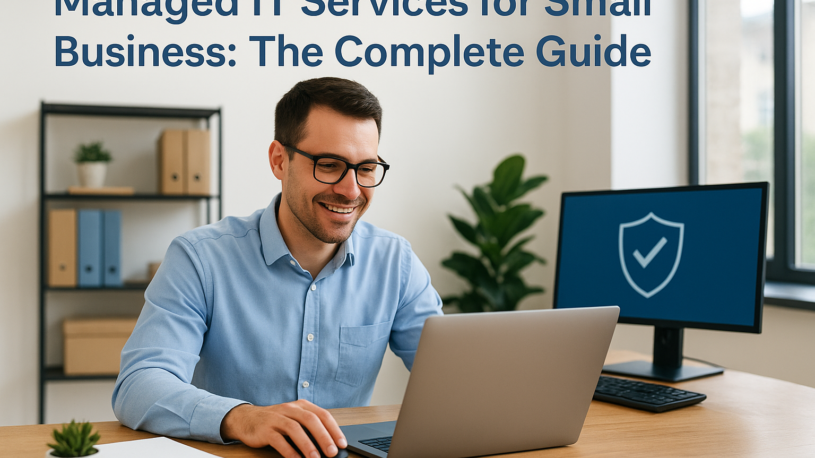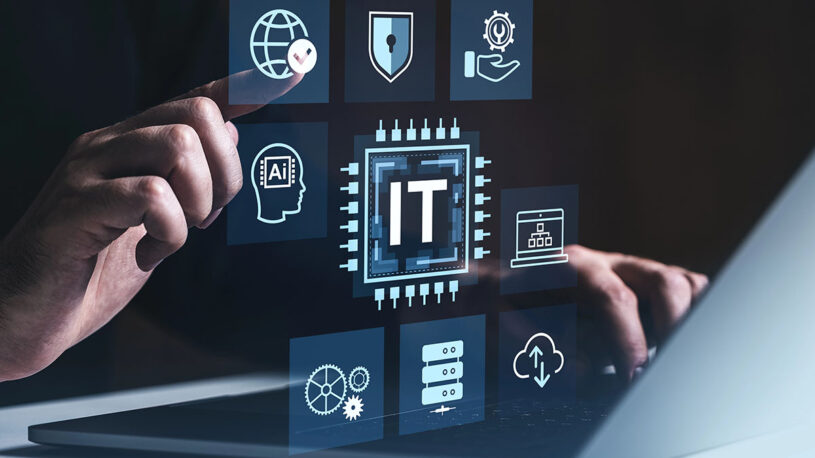

Top San Marcos Network Security Best Practices for 2025
Building a Fortress: Essential Network Security for 2025
This listicle delivers ten actionable San Marcos network security practices integral for safeguarding your business. Specifically tailored for small and medium-sized businesses (SMBs) and regulated industries like healthcare and finance, these strategies will empower you to implement robust security measures. Learn how to protect sensitive data, maintain compliance, and mitigate the increasing risks of cyber threats. We’ll dive into practical implementation details, moving beyond generic advice to provide concrete steps you can take immediately.
Why focus on network security best practices? For SMBs in Central Texas, cybersecurity isn’t a luxury, it’s essential for your business. Data breaches can lead to financial losses, reputational damage, and regulatory penalties. This is particularly relevant for organizations bound by regulations like HIPAA for healthcare and the FTC Safeguards Rule for financial institutions. By implementing these network security best practices, you build a strong defense against these threats. This curated list covers crucial elements, including:
- Zero Trust Security: Eliminate implicit trust and verify every access attempt.
- Multi-Factor Authentication (MFA): Add layers of security beyond passwords.
- Network Segmentation: Contain breaches by isolating network sections.
- Continuous Security Monitoring: Detect and respond to threats in real-time.
- Data Encryption: Protect sensitive information at rest and in transit.
We’ll skip the jargon and provide straightforward guidance on implementing these vital network security best practices. Whether you’re a healthcare provider in Austin seeking HIPAA compliance or a financial firm in San Antonio adhering to the FTC Safeguards Rule, this list – with the insights from an experienced San Marcos vCIO – provides the practical knowledge you need to build a more secure network in 2025 and beyond.
1. Zero Trust Security Model
The Zero Trust Security Model is a fundamental shift from traditional network security. It eliminates the concept of a trusted internal network, instead operating on the principle of “never trust, always verify.” Every access request, whether from inside or outside the network, is rigorously scrutinized. This approach minimizes the impact of breaches by limiting lateral movement within the network.
Implementing Zero Trust involves authenticating and authorizing every user, device, and application before granting access to any resource. This constant validation ensures that even if one component is compromised, the attacker’s access is contained. Examples of successful Zero Trust implementations include Google’s BeyondCorp, Coca-Cola’s global operations protection, and the U.S. Department of Defense’s zero trust strategy. These diverse use cases highlight the model’s adaptability across various sectors.
Implementing Zero Trust for Your Business
Starting with a Zero Trust implementation can seem daunting, but a phased approach is key. Prioritize identity and access management (IAM) as the foundation. Begin with pilot projects in less critical areas to gain experience and refine your approach. Crucially, implement comprehensive logging and monitoring from the outset to track access and identify anomalies. Engaging stakeholders early helps manage the change and ensures buy-in across the organization. Finally, leverage automation to streamline processes, reduce complexity, and maintain a positive user experience. This framework minimizes disruption and allows for gradual expansion of the Zero Trust model.
This video offers a further deep dive into the principles of Zero Trust and practical implementation strategies.
The infographic below visualizes three key metrics for measuring the effectiveness of a Zero Trust implementation: Mean Time to Detection (MTTD), Privileged Access Reduction %, and Network Segmentation Coverage. These metrics provide a quick reference for evaluating progress and identifying areas for improvement.

Lower MTTD values indicate faster threat detection, while high percentages for privileged access reduction and network segmentation coverage demonstrate a strong security posture. These quantifiable metrics allow organizations to objectively assess their Zero Trust implementation. Implementing a Zero Trust Security Model is a crucial network security best practice, especially for SMBs and regulated industries facing increasing cyber threats. Its proactive approach to security significantly reduces the risk and impact of breaches, protecting sensitive data and ensuring business continuity.
2. Multi-Factor Authentication (MFA)
Multi-Factor Authentication (MFA) is a critical security method that significantly enhances network protection. It requires users to provide multiple verification factors to access resources, combining something they know (like a password), something they have (such as a device or token), and something they are (biometrics). This layered approach creates a strong defense against unauthorized access, even if one factor is compromised.
MFA’s effectiveness is evident in its widespread adoption and proven success. Microsoft reports a 99.9% attack blocking rate with MFA enabled. GitHub mandates 2FA for code contributors, and AWS strongly recommends MFA implementation for root account access. The banking industry’s widespread use of MFA for online transactions further demonstrates its value.
Implementing MFA for Your Business
Implementing MFA can be straightforward and highly beneficial. Prioritize authenticator apps over SMS for enhanced security. Consider risk-based authentication to minimize user friction. Offer multiple backup authentication methods for flexibility. Crucially, educate users on setup and recovery procedures. Start with high-privilege accounts and expand MFA coverage gradually.
Implementing MFA is a crucial network security best practice, especially for SMBs and regulated industries. This proactive security measure drastically reduces the risk and impact of breaches, strengthening your security posture and safeguarding sensitive data.
3. Network Segmentation
Network segmentation is the practice of dividing a computer network into smaller, isolated segments or subnets. This limits the scope of potential security breaches and controls traffic flow. Creating these security boundaries prevents the lateral movement of threats and contains potential incidents, minimizing damage.

Examples of effective network segmentation include healthcare networks separating patient data systems from administrative networks. Financial institutions isolate trading platforms for enhanced security. Manufacturing companies protect operational technology from corporate IT networks to prevent disruptions. Cloud providers use segmentation for tenant isolation, ensuring data privacy.
Implementing Network Segmentation for Your Business
Start by identifying your critical assets and mapping data flows. This clarifies which segments require the highest levels of security. Implement default-deny policies between segments, allowing only necessary communication. Utilize automation for consistent policy enforcement and reduce manual configuration errors. Regularly audit and update segmentation rules to adapt to changing business needs and emerging threats. Monitor inter-segment traffic for anomalies, which can indicate malicious activity.
Network segmentation is a crucial network security best practice for SMBs and regulated industries facing increasing cyber threats. This is particularly important for those handling sensitive data like healthcare or financial information. It provides a proactive security measure, limiting the damage from a potential breach and ensuring business continuity. By containing threats and controlling access, segmentation strengthens your overall security posture and protects valuable assets.
4. Regular Security Patches and Updates
Regular security patches and updates form a cornerstone of effective network security best practices. This systematic process involves identifying, testing, and applying updates to operating systems, applications, and firmware. Patching addresses known vulnerabilities, closing security gaps that attackers could exploit. Ignoring these updates leaves systems exposed to threats like ransomware and data breaches.
Examples of the importance of patching include Microsoft’s monthly Patch Tuesday updates, which address critical vulnerabilities across their software ecosystem. Conversely, the WannaCry ransomware exploited unpatched Windows systems, crippling organizations worldwide. The Equifax breach, resulting from an unpatched Apache Struts vulnerability, further underscores the devastating consequences of neglecting updates.
Implementing Regular Patching for Your Business
Establishing a robust patching process is vital for maintaining a strong security posture. Prioritize patches based on severity and exposure, addressing critical vulnerabilities first. Testing patches in a non-production environment before deploying them to critical systems prevents unforeseen issues. Maintaining a comprehensive asset inventory ensures complete coverage, leaving no system vulnerable.
- Establish regular patching schedules and maintenance windows. This minimizes disruption to operations.
- Prioritize patches based on severity and exposure. Address critical vulnerabilities first.
- Test patches in non-production environments. This prevents unforeseen issues.
- Maintain asset inventory for comprehensive coverage. Ensure no system is left vulnerable.
- Implement automated patching for non-critical systems. Streamline the process and improve efficiency.
Regular patching is a fundamental network security best practice, crucial for SMBs and regulated industries. Proactively addressing vulnerabilities significantly reduces the risk and impact of cyberattacks, protecting sensitive data and ensuring business continuity. This practice is particularly important for organizations handling sensitive data, such as healthcare providers subject to HIPAA, and financial institutions adhering to the FTC Safeguards Rule. Staying up-to-date with security patches is essential for maintaining compliance and safeguarding customer trust.
5. Continuous Security Monitoring and Logging
Continuous Security Monitoring and Logging (CSML) is the ongoing process of collecting, analyzing, and acting upon security-related events and logs. This real-time vigilance allows businesses to quickly detect, investigate, and respond to potential cyber threats before they escalate into major incidents. Implementing CSML involves deploying tools like Security Information and Event Management (SIEM) systems and potentially establishing a dedicated Security Operations Center (SOC).
JPMorgan Chase’s significant investment in advanced monitoring and Target’s enhanced security posture following their 2013 breach exemplify the growing importance of CSML. Even government agencies leverage systems like Einstein for continuous threat monitoring, and numerous cloud providers offer managed SIEM services, making advanced security accessible to organizations of all sizes.
Implementing CSML for Your Business
Implementing CSML doesn’t require a massive overhaul. A phased approach prioritizing high-value assets and critical systems is often the most effective. Start by tuning detection rules to minimize false positives and establish log retention policies aligned with compliance requirements, such as HIPAA or the FTC Safeguards Rule. Leveraging threat intelligence enhances detection capabilities and provides context for faster response. Finally, clear incident response procedures are crucial for effective remediation.
- Focus on high-value assets first.
- Tune detection rules.
- Implement appropriate log retention policies.
- Use threat intelligence.
- Establish incident response procedures.
Implementing CSML is a core network security best practice for SMBs and regulated industries. This proactive approach dramatically reduces the risk and impact of breaches, safeguarding sensitive data and maintaining business continuity in today’s increasingly complex threat landscape.
6. Employee Security Awareness Training
Employee Security Awareness Training equips your workforce with the knowledge and skills to identify and mitigate cybersecurity threats. These structured programs educate employees about safe computing practices, emphasizing their crucial role in protecting sensitive data. Regular training covering phishing, social engineering, and security policies helps create a robust “human firewall,” strengthening your overall network security posture.
Real-world examples demonstrate the effectiveness of such programs. KnowBe4’s phishing simulations have reportedly reduced click rates by 90%, showcasing the impact of practical training. Following a significant data breach, Anthem implemented comprehensive security training to reinforce its defenses. Even the U.S. Department of Homeland Security runs cybersecurity awareness campaigns, highlighting the importance of employee education at all levels. Financial services firms also mandate annual security training, recognizing the critical role employees play in protecting financial assets.
Implementing Effective Security Awareness Training
Tailoring training to employees’ specific roles ensures relevance and engagement. Use real-world examples and current threat scenarios to make the training relatable and impactful. Regular phishing simulations offer practical experience in identifying and responding to threats. Providing immediate feedback on security behaviors reinforces positive habits. Finally, recognizing and rewarding good security practices motivates employees and fosters a culture of security awareness.
This proactive approach empowers employees to become active participants in your organization’s security strategy. By investing in ongoing training and reinforcement, you can transform your workforce from a potential vulnerability into a powerful line of defense. This ultimately contributes to a stronger overall security posture and reduces the likelihood of successful cyberattacks, particularly important for SMBs and regulated industries facing stringent compliance requirements and evolving cyber threats. Implementing robust employee security awareness training is a network security best practice that directly protects your sensitive data, brand reputation, and bottom line.
7. Backup and Disaster Recovery Planning
Backup and Disaster Recovery Planning (BDR) isn’t just a technical process; it’s a business imperative. It encompasses the strategies and procedures for protecting, backing up, and recovering crucial data and systems. This safeguards your business against security incidents, natural disasters, or even simple system failures. A robust BDR plan minimizes downtime, prevents data loss, and ensures business continuity.
Examples of successful BDR implementations highlight its importance. Datto showcases numerous ransomware recovery success stories. Financial firms demonstrated resilience during Hurricane Sandy due to effective disaster recovery planning. Even the COVID-19 pandemic forced businesses to adapt with robust business continuity implementations. Maersk’s recovery from the NotPetya ransomware attack, while costly, demonstrates the critical role of BDR in surviving major cyberattacks.
Implementing BDR for Your Business
Building a strong BDR plan involves several key steps. Adhere to the 3-2-1 backup rule: maintain 3 copies of your data on 2 different media, with 1 copy stored offsite. Regularly test backup integrity and recovery procedures to ensure they function as expected. Isolate backups from production networks to prevent them from being compromised in a security incident.
Crucially, document all procedures and train staff on recovery processes. This preparation ensures a swift and coordinated response in a crisis. Consider immutable backup solutions, which protect backups from ransomware encryption, further strengthening your security posture.
BDR is a crucial network security best practice for all businesses, especially SMBs and regulated industries. It provides the safety net needed to navigate unforeseen events and maintain operations. Implementing a proactive BDR plan safeguards valuable data, minimizes financial losses, and ensures long-term business viability.
8. Access Control and Privilege Management
Access control and privilege management form a critical layer of network security best practices. This systematic approach governs user access rights and privileges, adhering to the principle of least privilege: granting users only the minimum access necessary to perform their job functions. This minimizes the potential damage from compromised accounts, insider threats, or accidental errors. Implementing robust access controls is essential for protecting sensitive data and maintaining the integrity of systems.
Real-world breaches underscore the importance of privilege management. The Edward Snowden case highlighted the risks of excessive access, while the Capital One breach demonstrated the devastating consequences of compromised privileged accounts. Conversely, organizations like Microsoft, with their Zero Trust access model, showcase the benefits of a robust access control strategy.
Implementing Effective Access Control
Effective access control involves a multi-faceted approach. Role-based access control (RBAC) streamlines permissions management by assigning access based on job roles. Privileged access management (PAM) adds a layer of security for administrator accounts, controlling and monitoring their powerful access rights. Regular access reviews and certifications ensure that permissions remain aligned with current job responsibilities and identify any discrepancies.
- Automated Provisioning/Deprovisioning: Streamline the user lifecycle by automatically granting and revoking access upon hiring and termination.
- Regular Access Reviews: Periodically review user access rights to verify appropriateness and revoke unnecessary privileges.
- Privileged Access Management (PAM) Tools: Implement PAM solutions to control and monitor administrative access.
- Just-in-Time Access: Grant temporary elevated privileges only when needed, minimizing the window of vulnerability.
- Monitor Privilege Escalation Attempts: Track and alert on suspicious attempts to gain higher-level access.
Implementing access control and privilege management is crucial for any organization, especially SMBs and regulated industries. It’s a proactive security measure that significantly reduces the risk and impact of security breaches, protects sensitive data, and ensures business continuity. This practice aligns with the broader goal of achieving a strong security posture and mitigating the ever-evolving threat landscape. By implementing these best practices, organizations can strengthen their network security and safeguard valuable assets.
9. Endpoint Detection and Response (EDR)
Endpoint Detection and Response (EDR) represents a crucial advancement in network security best practices. EDR solutions continuously monitor endpoint devices like computers, mobile devices, and servers for suspicious activities. This real-time threat detection goes beyond traditional antivirus software by employing behavioral analysis and threat intelligence. EDR provides in-depth investigation capabilities and enables automated response actions, containing threats before they escalate.
Successful EDR implementations have proven invaluable across various sectors. For example, telemetry from EDR systems played a key role in detecting the SolarWinds attack. Healthcare organizations leverage EDR for ransomware prevention, while government agencies use it to detect advanced persistent threats (APTs). In the financial services industry, EDR is instrumental in identifying insider threats. These diverse use cases demonstrate EDR’s adaptability and effectiveness.
Implementing EDR for Your Business
Integrating EDR into your network security strategy requires a comprehensive approach. Ensure complete endpoint coverage, including mobile devices, to eliminate vulnerabilities. Integrate EDR with your Security Information and Event Management (SIEM) system and other security tools for a unified security posture. Develop playbooks for common response scenarios to ensure swift and consistent action. Training your security teams on EDR investigation procedures is critical for maximizing its effectiveness. Finally, regularly update threat intelligence feeds to stay ahead of evolving threats.
EDR is particularly beneficial for SMBs and regulated industries facing increasing cyber threats. Implementing EDR is a network security best practice that provides proactive threat detection, rapid response capabilities, and in-depth investigation tools, significantly reducing the risk and impact of breaches. This safeguards sensitive data, maintains business continuity, and strengthens overall network security.
10. Encryption and Data Protection
Encryption and data protection form a cornerstone of network security best practices. This involves using cryptographic techniques to protect sensitive data both at rest (stored on devices or servers) and in transit (moving across networks). This ensures confidentiality and integrity, preventing unauthorized access and modification. Encryption transforms readable data into an unreadable format, requiring a decryption key to access the original information.
Successful implementations of encryption are widespread. Apple uses end-to-end encryption in iMessage and FaceTime, while WhatsApp leverages the Signal Protocol for secure messaging. Healthcare organizations encrypt patient records to comply with HIPAA, and financial institutions protect transaction data to meet regulatory requirements. These diverse examples showcase the critical role of encryption across various sectors.
Implementing Encryption for Your Business
Implementing robust encryption doesn’t have to be complex. Start by prioritizing data at rest. Utilize full disk encryption for laptops and servers, and encrypt sensitive data within databases and backups. For data in transit, ensure all web communications use TLS 1.3. Consider hardware-based encryption for enhanced performance, especially for large datasets.
Strong encryption algorithms like AES-256 and RSA-2048 are crucial for effective protection. Implement proper key rotation and lifecycle management to further enhance security. Regularly review and update your encryption practices to stay ahead of evolving threats. These proactive steps minimize the risk of data breaches and maintain the confidentiality of sensitive information. Implementing strong encryption and data protection is a fundamental network security best practice, especially for SMBs and regulated industries handling sensitive customer and business data. It provides a critical layer of defense against cyber threats, ensuring compliance and maintaining business continuity.
Top 10 Network Security Practices Comparison
| Security Measure | Implementation Complexity | Resource Requirements | Expected Outcomes | Ideal Use Cases | Key Advantages |
|---|---|---|---|---|---|
| Zero Trust Security Model | High – complex and cultural shift | High – significant cost and resources | Continuous verification, reduced attack surface | Organizations with remote access and cloud infrastructure | Granular control, threat lateral movement prevention, improved visibility |
| Multi-Factor Authentication (MFA) | Moderate – straightforward setups | Moderate – varies by method | Stronger access security, reduced account compromises | User authentication for sensitive accounts | Blocks phishing, cost-effective, compliance-friendly |
| Network Segmentation | Moderate to High – network skills needed | High – infrastructure and maintenance | Limited breach scope, improved network performance | Sensitive environments requiring strict access control | Limits blast radius, regulatory compliance, better traffic control |
| Regular Security Patches and Updates | Moderate – organizational coordination | Moderate – testing and deployment resources | Closure of known vulnerabilities, improved stability | All software-dependent organizations | Reduces risk of exploits, automated, compliance support |
| Continuous Security Monitoring and Logging | High – specialized tools and expertise | High – storage, processing, skilled staff | Early incident detection, comprehensive visibility | Large enterprises with complex infrastructure | Early threat detection, forensic support, compliance reporting |
| Employee Security Awareness Training | Low to Moderate – ongoing effort | Low to Moderate – training resources | Reduced human error, stronger security culture | All organizations with human risk factors | Cost-effective, improves reporting, compliance aid |
| Backup and Disaster Recovery Planning | Moderate – planning and coordination | High – storage and backup infrastructure | Business continuity, data protection | Organizations requiring uptime and data integrity | Minimizes downtime, ransomware protection, compliance support |
| Access Control and Privilege Management | High – complex policies and maintenance | Moderate to High – tools and audits | Reduced insider threats, principle of least privilege enforced | Enterprises with sensitive data access | Limits risk scope, compliance, precise control |
| Endpoint Detection and Response (EDR) | High – advanced tools and expertise | High – endpoint resources and skilled analysts | Real-time threat detection and response | Organizations facing advanced threats | Detects unknown threats, rapid containment, threat hunting |
| Encryption and Data Protection | Moderate to High – key management needed | Moderate to High – computational overhead | Data confidentiality and integrity ensured | Data-sensitive industries (finance, healthcare) | Protects data, compliance, enables secure sharing |
Staying Ahead: Securing Your Future with Network Security Best Practices
In today’s interconnected world, robust network security isn’t just an option – it’s a necessity. This article explored ten critical network security best practices, ranging from foundational elements like multi-factor authentication (MFA) and regular patching, to more advanced concepts like zero trust security and endpoint detection and response (EDR). Implementing these practices is crucial for protecting your valuable data, maintaining business continuity, and ensuring regulatory compliance.
Key Takeaways for a Secure Network
Let’s recap the essential takeaways from this comprehensive guide to network security best practices:
- Proactive Defense: Shifting from reactive to proactive security measures is paramount. Implementing safeguards like continuous security monitoring and employee security awareness training prevents breaches before they occur.
- Layered Security: A multi-layered approach, incorporating firewalls, intrusion detection systems, and data encryption, provides a robust defense against diverse cyber threats.
- Adaptation is Key: The cyber threat landscape is constantly evolving. Regularly reviewing and updating your security policies, configurations, and technologies is essential for maintaining a strong security posture.
Actionable Next Steps for Strengthening Your Defenses
Now that you’ve reviewed the best practices, it’s time to put them into action. Consider these next steps:
- Prioritize Based on Risk: Conduct a thorough risk assessment to identify your organization’s vulnerabilities and prioritize the implementation of security measures.
- Develop a Comprehensive Security Plan: Document your security policies, procedures, and incident response protocols. Regularly review and update this plan to address evolving threats.
- Invest in Security Tools and Technologies: Implement the necessary tools and technologies to support your security strategy, including firewalls, intrusion detection systems, and endpoint protection software.
- Foster a Security-Conscious Culture: Educate your employees about cybersecurity risks and best practices. Empower them to become an active part of your organization’s security defenses.
The Value of Network Security Expertise
Mastering these network security practices is essential for safeguarding your business. These measures protect your sensitive data, ensure business continuity, and build trust with your customers. By working with a outsourced IT in San Marcos, you’re investing in the long-term success and stability of your organization.
For organizations in healthcare, finance, or professional services navigating complex regulatory compliances like HIPAA and the FTC Safeguards Rule, implementing these best practices is particularly crucial. A strong security posture also enhances your brand reputation and builds confidence among your clients and partners.
Strengthening your San Marcos IT security can feel overwhelming. For expert assistance in implementing these best practices and other critical cybersecurity services, partner with a local managed service provider in San Marcos. tekRESCUE can provide the guidance and support you need to navigate the IT changes and advancements .
Table of Contents









